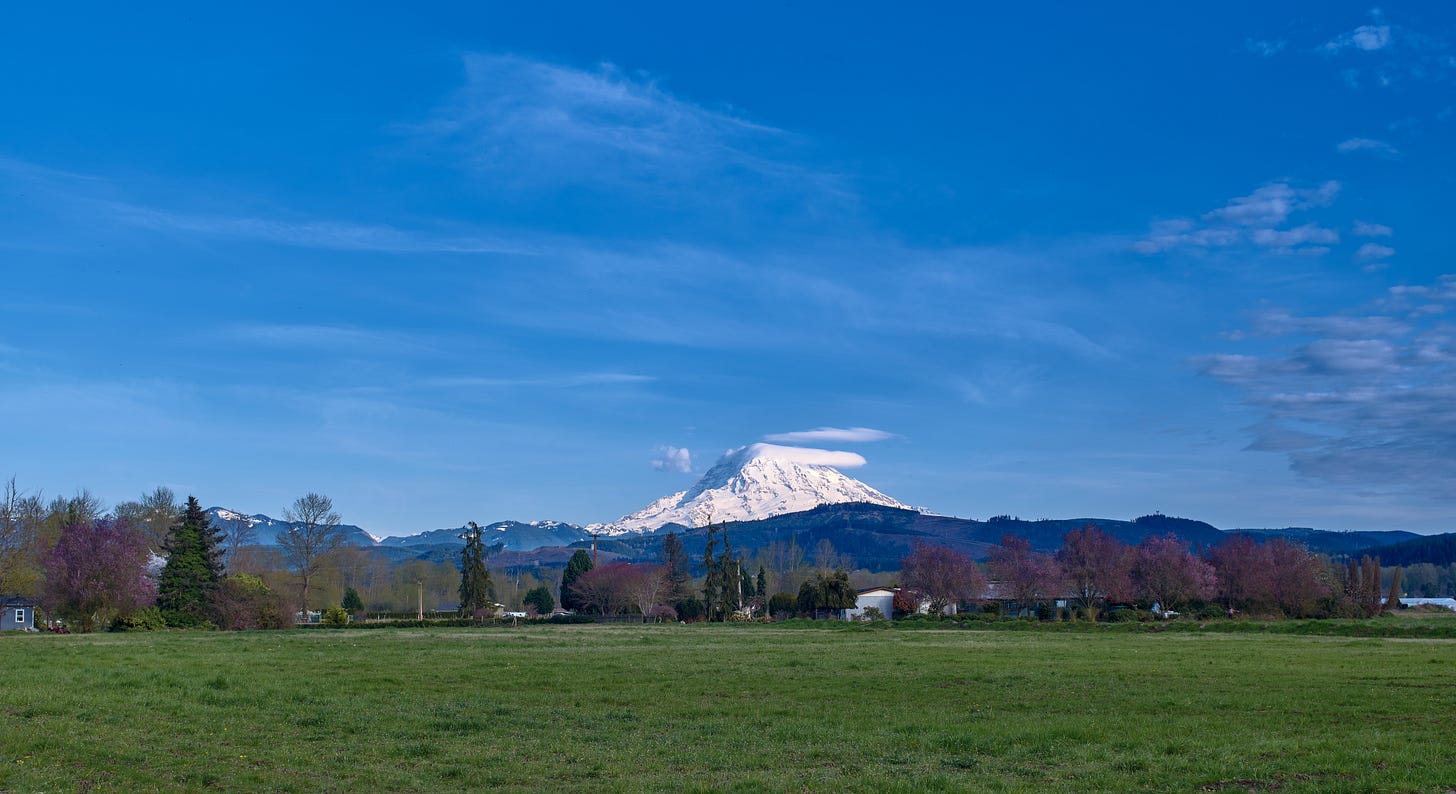Mountains in winter can be amazing. Swirling clouds, snowfalls, majestic lighting—the problem is that there are often clouds right around those mountains. So you have to be in the right place at the right time.
That was a few days ago for me. I just had the itch to get a look at Mt. Rainier, so I drove to the big farms in Orting to take a look. Not the most photogenic foreground there, but it can still be fun if there are interesting things happening.
From the spot where I photographed, it was partly sunny. The mountain came in and out of the clouds while I was there testing my new Canon FD 500mm f/4.5—a real antique, but amazingly sharp.
The shot above was taken with the 2x extender attached, giving me a focal length of 1000mm. At that moment, the mountain was engulfed with clouds and snow, but this portion was visible long enough to get the shot.
I could write a long story about how I sharpened this image. The lens is sharp, but the extender is not really very sharp and the images come out soft. But with modern sharpening tools and a careful touch, one can bring out details from the mud. This is that.
I took eight or nine images like that one, as quickly as I could, so I could assemble them into a panorama without too much difference between the shots. Well, they didn’t come together as well as I would liked, so here’s a panorama shot later on.
The exposure was off; some sunlight broke through and the snow on top got really bright. The foreground is a small mountain, and some local tree in front of me. Plus, panorama with such a long lens are simply challenging to get right. There’s so much magnification that small changes between images can ruin it.
For myself, I like the single image best; it really captures the feel of the mountain in winter.
Speaking of panoramas, here’s a lollapalooza. The individual images were shot at 500mm, so there’s not as much detail, but the overall sense of the scene is pretty cool. (This was about an hour and a half before the shots above, before the clouds grew from marshmallows to giant-size.)
The full-size panorama could be printed out at 15’ wide and 4’ high.
Finally, I was also testing a much smaller lens, another antique with character: a Mamiya 645 55mm f/2.8. This was shot as soon as I got the fields. As for the other photos, the Fujifilm GFX 100S II camera was used. That is very close to how the mountain looks to the eye.









Looks even more impressive on my big screen laptop. Loks like a snow tube in the upper left quadrant!